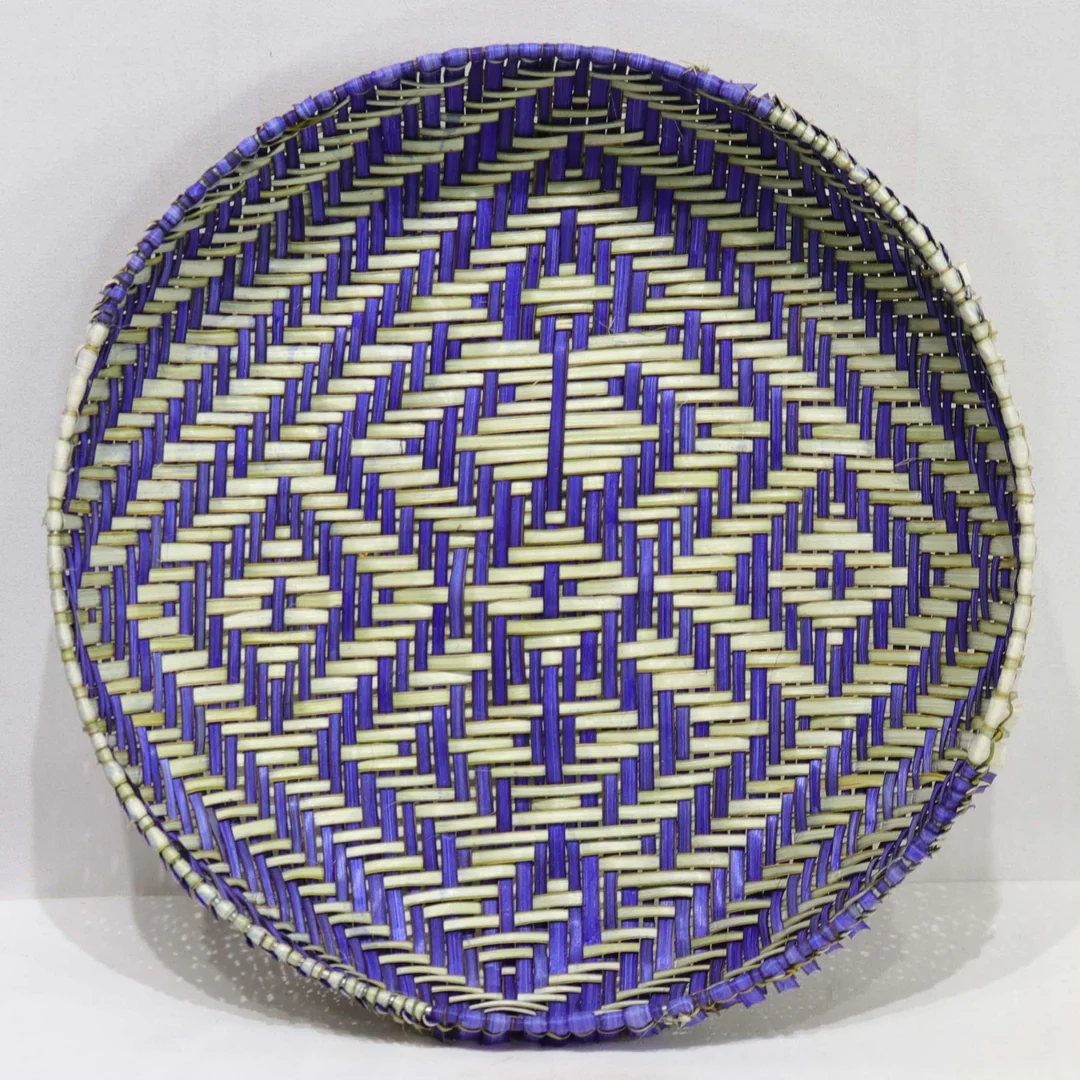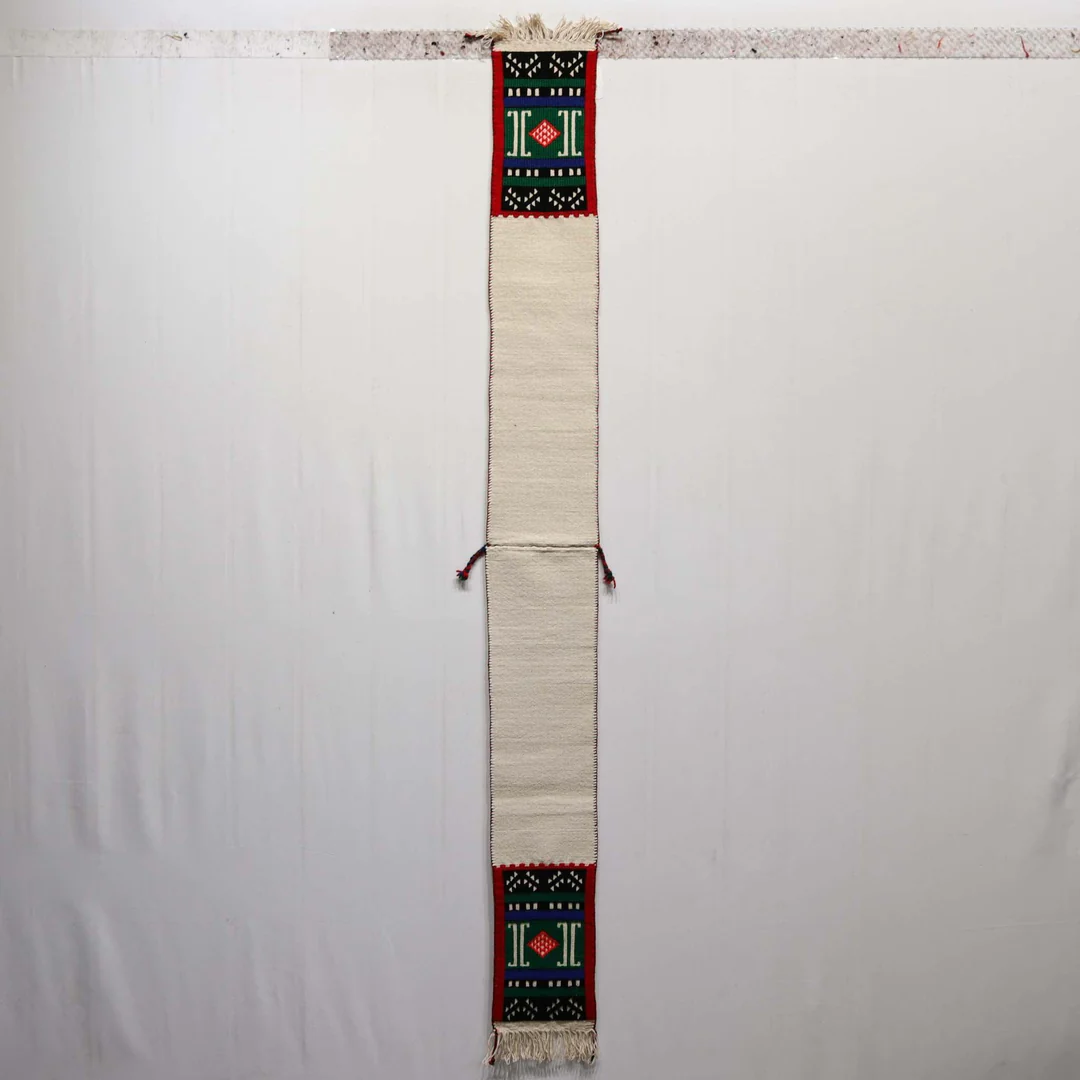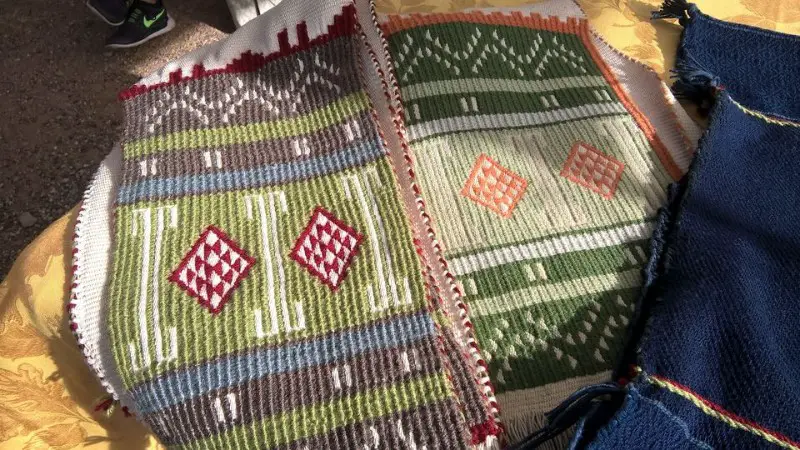Say Goodbye to Your Fear of Spiders with Spider Woman and the Hopis
- Lorraine

- Nov 12, 2023
- 5 min read
Updated: Apr 1, 2024
Today, I'll take you on a journey into the legend of Spider Woman and the world of weaving that will reshape your perception of spiders.
Have you ever felt a slight unease at those eight hairy legs? You're not alone. Spiders, fascinating to some, instill fear in others. But fear not, as today we explore a realm where spiders are no longer the frightening creatures you once thought. Join me on this voyage to discover the role of Grandmother Spider Woman in the Hopi Creation Myth, her involvement with weaving, and creativity.
I The Role of Spider Woman in the Creation Myth
Let's delve into the extraordinary role of Spider Woman in the Hopi creation myth. In this ancient narrative, she holds a central place as the creator and mother of humanity. According to the Hopi Book by Frank Waters, considered the Hopi bible, Spider Woman, or Kokyangwuti, played a significant role in the creation of the world and humanity.
From the book: Sotuknang journeyed to the chosen universe for the First World, Tokpela, where he created the one who would stay on this earth and be his helper—Kokyangwuti, Mother Spider. When she awoke to life and received her name, she asked, "Why am I here?" "Open your eyes," replied Sotuknang, "this is the earth we have created. It has substance, direction, time, a beginning, and an end. But it lacks life. There's no joyful commotion, no cries of happiness. What is life without sound and movement? That's why we've granted you the power to help us create this life. You have received knowledge, wisdom, and love to make all beings you create happy. That's the reason for your presence here."
With clay, saliva, and a gentle voice, she sang the song of creation giving birth to plants, flowers, bushes, and trees. She created birds and animals, all while continuing to chant this sacred song. After the creation of nature, Spider Woman turned to crafting humans. Using clay of different colors—yellow, red, white, and black—mixed with her saliva, she molded these creatures against her chest, singing the song of creation. Thus, she shaped the four human races, four men, and, in her own image, four women.
Originally, these humans had a soft spot on their foreheads, which, although solidifying over time, maintained a special connection with Sotuknang and their Creator. However, they were unable to communicate verbally. To solve this issue, Spider Woman appealed to Sotuknang, who granted them four languages. The only directive he gave was to respect their Creator and live in harmony with him.
According to the legend, Spider Woman taught the Hopis how to live in harmony with the Earth and create their own world. She guided them to become the guardians of the Earth and the guardians of life. Through this myth, we discover that spiders are seen as divine creatures, bearers of wisdom and creation.
For further exploration of the intriguing relationship between spiders, insects, and Hopi mythology, don't miss the detailed article: Les araignées et les insectes dans la mythologie et la religion des Indiens hopis
II The Gift of Weaving to the Hopis
But Spider Woman doesn't stop there. The legendary creator shares the gift of weaving with the Hopis, and this is no coincidence. Just as spiders weave delicate webs, Spider Woman imparts this precious legacy to the Hopis. She weaves her own web, and through this act, she not only transmits the art of weaving but also a deep connection with nature and creation. The motifs and symbols they weave into their textiles tell stories of the land, deities, and life itself. Thus, the act of weaving goes beyond mere fabric-making; it becomes a celebration of creation and a link to their Creator.
Hopi textiles are genuine works of art, reflecting the richness of their culture and the importance of weaving. It is thanks to Spider Woman that the Hopis possess this art, which continues to thrive today.
III Cultural Significance: Motifs and Symbols
The motifs and symbols found in Hopi textiles provide a genuine window into their culture. They represent elements of nature, deities, historical events, and more. Hopi weaving is an artistic expression that preserves and transmits their history, spirituality, and values.
Here are some examples of motifs and their meanings in Hopi textiles:
Birds: Bird motifs symbolize the Hopis' connection with the natural world and their spiritual link with birds, considered divine messengers.
Stars and Sky: Star and sky motifs evoke spirituality and cosmic vision, illustrating the Hopis' relationship with the night sky and stars.
Earth and Elements: Motifs of earth, water, fire, and air represent the elements of nature and their significance in Hopi life.
Rainbow: The rainbow is a symbol of good fortune and spiritual renewal in Hopi culture, often used to express hope and luck.
Double Helix: This motif alludes to genetics and the concept of DNA, interpreted as a link between past and future generations, highlighting the importance of continuity and knowledge transmission.
Diamonds and Squares: Diamond and square motifs symbolize the earth, stability, and balance. They also express the importance of harmony in Hopi life.
These motifs are rich in symbolism, narrating the history, spirituality, and values of the Hopis. They add depth and particular meaning to Hopi textiles, going beyond mere aesthetics. As we explore these motifs and symbols, we grasp the significance of every detail in Hopi textiles—an art extending far beyond the act of weaving threads.
IV Knowledge Transmission
The tradition of weaving among the Hopis is more than just a craft skill; it is an essential means of passing on knowledge and values from generation to generation. Hopi elders play a crucial role in this cultural heritage, teaching the younger generation the skills required for weaving, ensuring the preservation of this traditional art.
Knowledge transmission among the Hopis is steeped in respect and dedication. Young learners are encouraged to observe, listen, and follow in the footsteps of their elders with great attention. Weaving becomes a form of silent conversation, where every gesture and motif tells ancient stories.
This strengthens the bond between generations and perpetuates the wisdom at the core of Hopi culture. Elders teach not only weaving techniques but also the profound meanings behind motifs and symbols. Weaving becomes a means of connecting the past to the present and preserving a rich heritage.
V Spider Woman and the Matrix of Creation
Weaving among the Hopis, far more than a mere craft, is deeply rooted in their cosmogony. Spider Woman, as a creative goddess, is considered the matrix of creation. She is the guardian of life and creativity, much like spiders are the weavers of nature.
Think of it this way: weaving is an activity that creates a complex network of threads, just as Spider Woman created the world through her song and knowledge. Weaving becomes a tangible reflection of creation, where each thread is carefully woven to form a harmonious whole. It symbolizes the importance of collaboration and harmony in the world, fundamental concepts in Hopi culture.
And perhaps, in a lighthearted manner, we could even consider that the World Wide Web (Internet) we use to connect and share knowledge is Spider Woman's web in the modern world—a web that transcends time and space.
So, dear reader, the next time you encounter a spider, remember this Hopi story. Instead of fleeing in fear, greet these little weavers of nature with a friendly, "Hello, Spider Woman explained it all to me!"
Weaving is more than just string and knots. It's an art, a cultural heritage, and perhaps even a lesson in creativity inspired by Spider Woman. So, bid farewell to your fear of spiders and embrace the web of creation.
Your voice matters in this conversation about the fascinating Hopi culture, Spider Woman, and the art of weaving. What are your thoughts on this dive into Hopi traditions and creativity? Do you have experiences or stories to share about weaving or mythology? We look forward to reading your reflections and building a community where diverse ideas enrich our understanding. Feel free to leave your comments below and continue this exploration together!























Comments